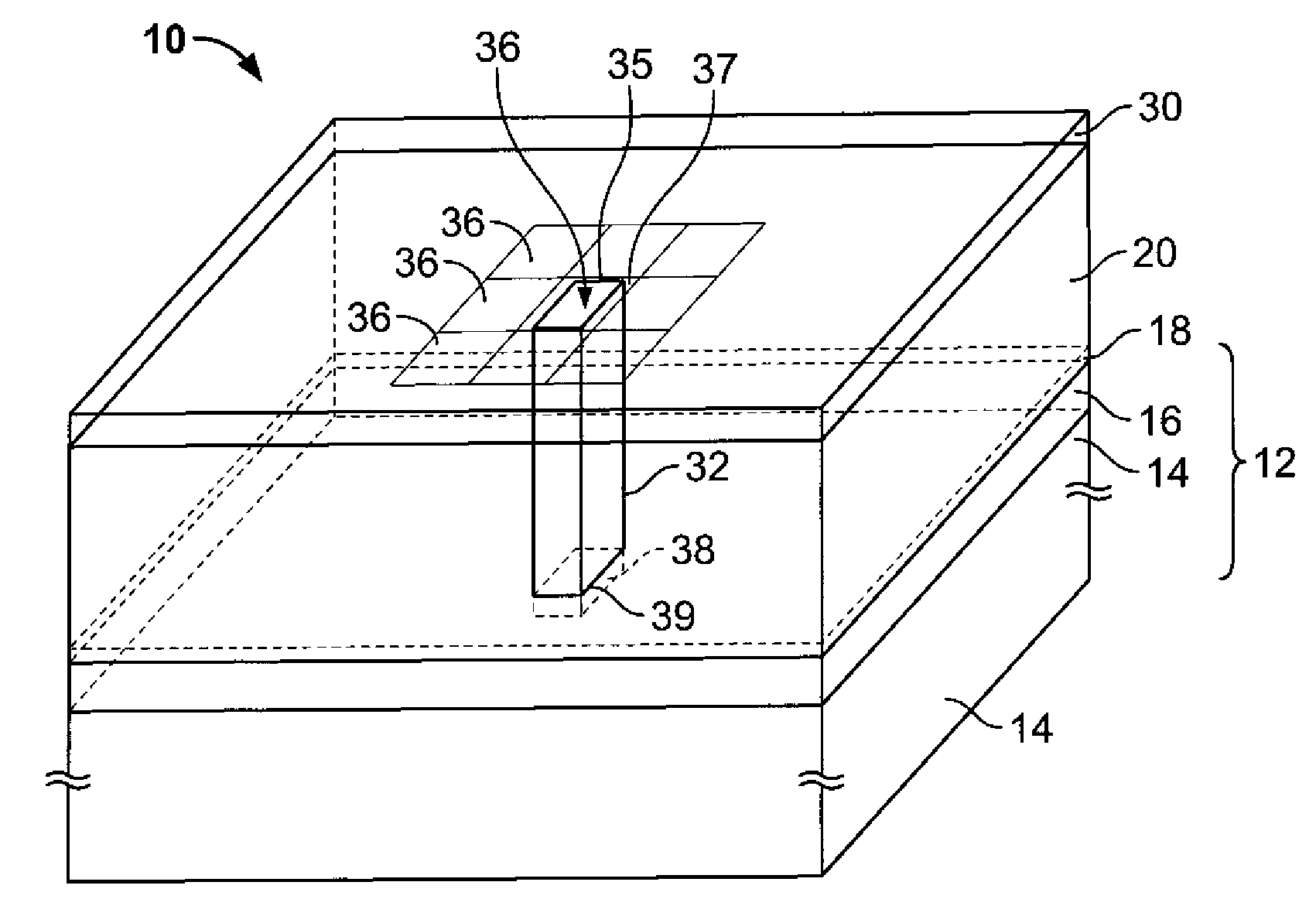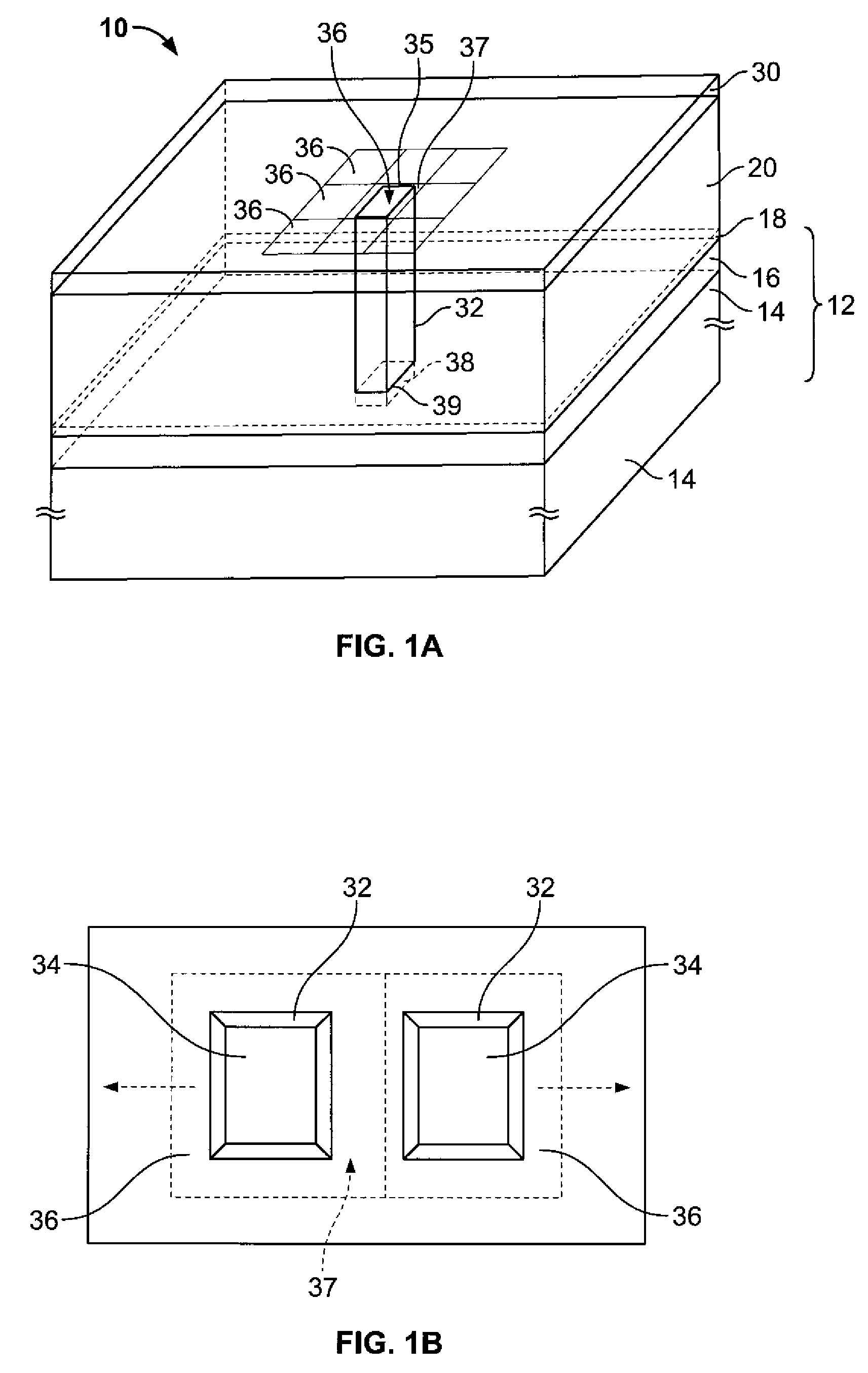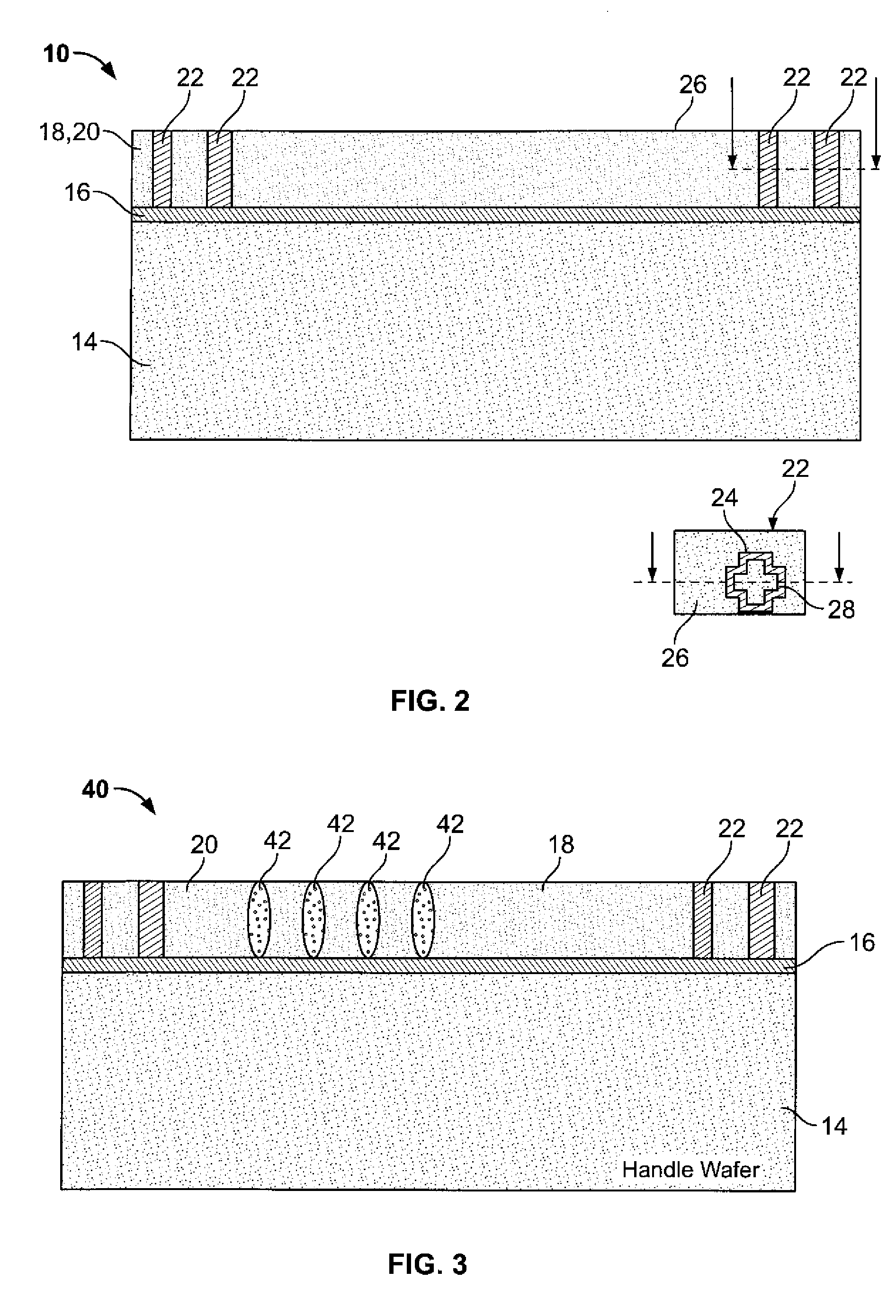Method and device for reducing crosstalk in back illuminated imagers
a back illuminated imager and crosstalk technology, applied in the field of imagers, can solve the problems of significant performance limitations of front-illuminated imagers low fill factor/low sensitivity, etc., and achieve the effect of reducing crosstalk
- Summary
- Abstract
- Description
- Claims
- Application Information
AI Technical Summary
Problems solved by technology
Method used
Image
Examples
embodiment-1
Method Use of Higher Energy Implants to Create Electrical Barriers
[0038]FIG. 3 shows a cross-section of an imager 40 having a plurality of isolation barriers formed therein by means of implanted dopants. The high-energy implants 42 are formed from available techniques in the fabrication industry. Today's high-energy (on the order of MeV) implanters are capable of implanting species in the range of 2-10 um deep into silicon. Referring now to FIGS. 1-4, a method 50 for forming isolation barriers made from high energy implants is described as follows:
[0039]At step 52, an SOI wafer 12 which has a thin Si seed layer 18 is provided. At step 54, an epitaxial layer 20 with a desired thickness (2-10 um) and resistivity is grown on the seed layer 18. At step 55, the doping profile of the epitaxial layer 20 is engineered according to the technique described in the '583 Patent. At step 56, alignment keys 22 are formed in the epitaxial layer 20. Sub-steps include printing alignment keys on the ...
embodiment-2
Method Use of Oxide Trenches to Create Electrical Barriers
[0040]FIG. 5 shows a cross-section of an imager 64 having a plurality of isolation barriers formed therein by means of oxide trenches. The oxide trenches 66, being insulators, act as electrical barriers to generated charge carriers and confine them within pixel collecting wells. One advantage of this method is that the barrier trenches 66 can be defined along with the alignment keys, eliminating the need for another photo mask. Referring now to FIGS. 1-2, 5 and 6, a method 68 for forming isolation barriers made from oxide trenches is described as follows:
[0041]At step 70, an SOI wafer 12 which has a thin Si seed layer 18 is provided. At step 72, an epitaxial layer 20 with a desired thickness (2-10 um) and resistivity is grown on the seed layer 18. At step 73, the doping profile of the epitaxial layer 20 is engineered according to the technique described in the '583 Patent. At step 74, trench outlines are formed about collect...
embodiment-3
Method Use of both Higher Energy Implants and Oxide Trenches to Create Electrical Barriers:
[0043]FIG. 7 shows a cross-sectional of all imager 84 having a plurality of isolation barriers 86 formed therein by means of both oxide trenches 88 and high energy implants 90, thereby combining methods 1 and 2 by creating oxide trenches and implanting dopants around those trenches. Referring now to FIGS. 1-2 and 7 and 8, a method 92 for forming isolation barriers made from oxide trenches and high energy implants is described as follows:
[0044]The method 92 begins by performing steps 70 to 80 of the method 68 to create oxide trenches and alignment keys. At step 94, regions about each of the filled trenches are opened down to the oxide layer 18, and at step 96, the regions are implanted with high energy dopants, the dopants being thermally activated thereupon. At step 97, imaging structures 30 are formed overlying the epitaxial layer 20. Since the oxide trenches are encapsulated by dopants, the...
PUM
 Login to View More
Login to View More Abstract
Description
Claims
Application Information
 Login to View More
Login to View More - R&D
- Intellectual Property
- Life Sciences
- Materials
- Tech Scout
- Unparalleled Data Quality
- Higher Quality Content
- 60% Fewer Hallucinations
Browse by: Latest US Patents, China's latest patents, Technical Efficacy Thesaurus, Application Domain, Technology Topic, Popular Technical Reports.
© 2025 PatSnap. All rights reserved.Legal|Privacy policy|Modern Slavery Act Transparency Statement|Sitemap|About US| Contact US: help@patsnap.com



